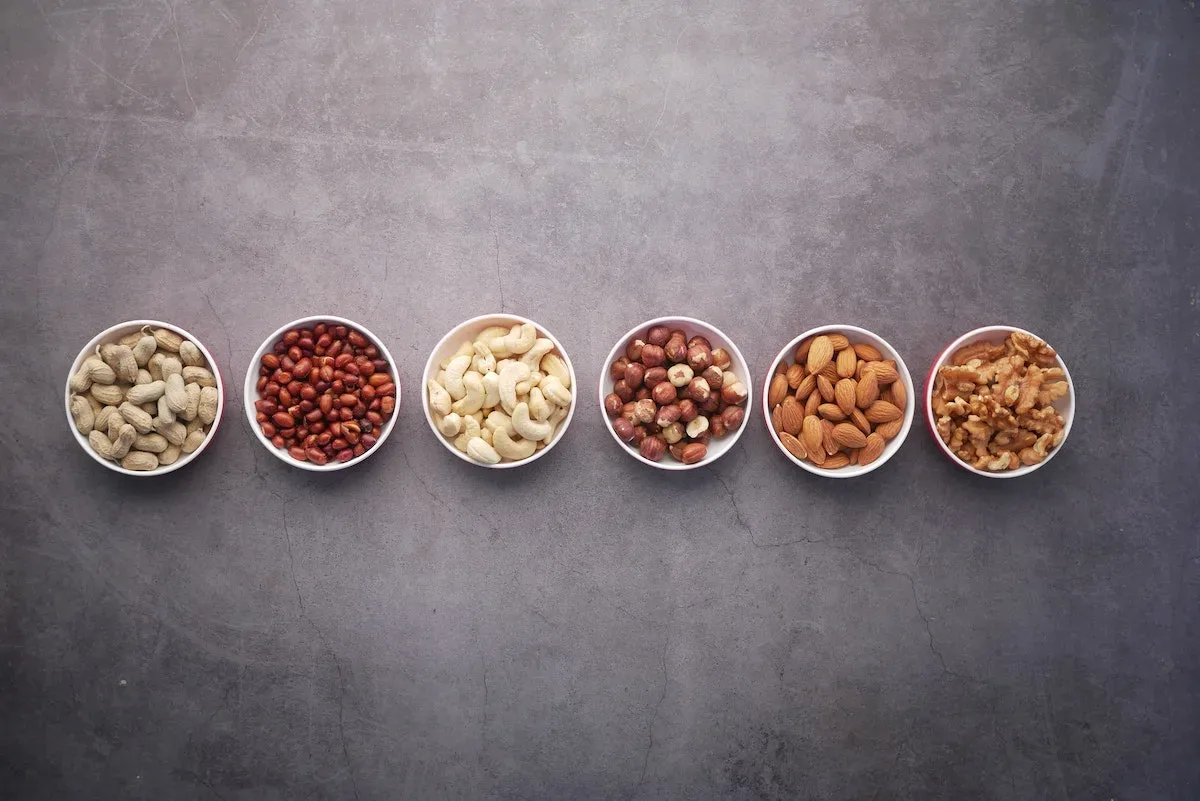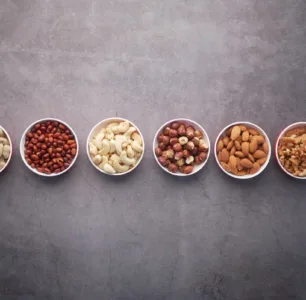During adolescence, the body undergoes significant changes, including rapid growth and development, making adequate nutrition essential for optimal health. Protein is a critical nutrient that plays a vital role in growth, repair, and maintenance of the body’s tissues, making it especially important for teenage girls. In this article, we will explore the benefits of protein, how much protein teenage girls need, and ways to incorporate protein-rich foods into their diet.
Benefits of Protein
Protein is a macronutrient that is essential for the growth and repair of the body’s tissues. It is made up of amino acids, which are the building blocks of proteins. Proteins are necessary for several functions in the body, including:
- Building and repairing tissues: Protein is essential for building and repairing tissues, including muscles, skin, and bones. During adolescence, the body undergoes rapid growth and development, making protein intake especially important.
- Supporting immune function: Proteins play a crucial role in supporting immune function. They help produce antibodies, which are proteins that help fight off infections.
- Regulating hormones and enzymes: Hormones and enzymes are proteins that help regulate various functions in the body. For example, insulin is a hormone that helps regulate blood sugar levels, while enzymes help break down food in the digestive system.
- Providing energy: Protein can also provide energy when carbohydrates and fats are not available. However, protein is not the body’s preferred source of energy, and using protein for energy can result in the breakdown of muscle tissue.
How Much Protein Do Teenage Girls Need?
The amount of protein teenage girls need depends on several factors, including age, weight, and physical activity level. The Recommended Dietary Allowance (RDA) for protein for teenage girls is 14-18 years: 46 grams per day
However, some teenage girls may need more protein, depending on their activity level. For example, teenage girls who engage in regular physical activity, such as sports or weightlifting, may need more protein to support muscle growth and repair.
Ways to Incorporate Protein into a Teenage Girl’s Diet:
- Include protein-rich foods at every meal: To meet their daily protein needs, teenage girls should include protein-rich foods at every meal. Good sources of protein include lean meats, fish, poultry, eggs, dairy products, beans, lentils, and tofu.
- Choose high-quality protein sources: High-quality protein sources contain all the essential amino acids the body needs to function properly. Examples of high-quality protein sources include animal products such as meat, fish, and dairy products, as well as soy products like tofu.
- Snack on protein-rich foods: Snacking on protein-rich foods can help teenage girls meet their daily protein needs. Good options include nuts, seeds, nut butter, yoghourt, and cheese.
- Try protein supplements: Protein supplements, such as protein powder or bars, can be a convenient way to meet protein needs, especially for teenage girls who are vegetarian or have difficulty getting enough protein from food alone. However, it’s important to choose high-quality supplements that are low in added sugars and other unhealthy ingredients.
- Don’t forget about plant-based protein sources: While animal products are excellent sources of protein, teenage girls can also meet their protein needs by including plant-based protein sources in their diet. Good options include beans, lentils, chickpeas, tofu, tempeh, and quinoa.
Can children eat too much protein
Yes, it is possible for children to eat too much protein. Consuming excessive amounts of protein can lead to several negative health consequences.
Firstly, consuming too much protein can put a strain on the kidneys, as they are responsible for filtering waste products from protein metabolism. This can lead to kidney damage and may worsen existing kidney problems.
Secondly, excessive protein intake can lead to an increase in the production of urea, a waste product that is excreted in the urine. This can cause dehydration, as the body needs to excrete more water to eliminate the excess urea.
Thirdly, consuming too much protein can also lead to weight gain, as excess protein is converted into fat and stored in the body. This can be particularly problematic for children who are already overweight or obese.
Lastly, consuming too much protein can lead to a deficiency in other essential nutrients, such as carbohydrates and fibre, which are necessary for overall health and well-being.
Therefore, it is important to ensure that children are consuming the appropriate amount of protein for their age and activity level, without going overboard. The American Academy of Pediatrics recommends that children between the ages of 1 and 3 consume about 13 grams of protein per day, while children between the ages of 4 and 8 consume about 19 grams of protein per day. For children between the ages of 9 and 13, the recommended daily intake is 34 grams for boys and 28 grams for girls.
It is also important to note that protein should be consumed in the context of a balanced and varied diet, which includes a variety of fruits, vegetables, whole grains, and healthy fats. Encouraging children to eat a wide range of foods can help ensure that they are getting all the nutrients they need for optimal health and well-being.
Should teenage girls use protein shakes?
Protein shakes can be a convenient and easy way for teenage girls to increase their protein intake, especially if they struggle to consume enough protein from whole food sources. However, it is important to note that protein shakes should not be used as a replacement for a balanced and varied diet.
Teenage girls who are physically active and engaging in regular exercise may require more protein to support muscle growth and recovery. In this case, protein shakes can be a useful addition to their diet. It is recommended that protein shakes be used as a supplement to a healthy diet, rather than a replacement for whole foods.
When choosing a protein shake, it is important to look for high-quality sources of protein, such as whey, casein, or plant-based proteins like pea or soy protein. It is also important to choose a shake that is low in added sugars and other unhealthy ingredients. Teenage girls should be cautious about using protein shakes that contain high levels of added sugars, artificial sweeteners, or other additives, as these can have negative health consequences.
It is also important to note that excessive protein intake can have negative health consequences, as mentioned earlier. Therefore, it is important to ensure that the total amount of protein consumed, including protein shakes, is within the recommended range for teenage girls. The Recommended Dietary Allowance (RDA) for protein for teenage girls is 46 grams per day.
In summary, protein shakes can be a useful addition to the diet of teenage girls who are physically active and engaging in regular exercise. However, they should not be used as a replacement for a balanced and varied diet, and it is important to choose high-quality shakes that are low in added sugars and other unhealthy ingredients. It is also important to ensure that the total amount of protein consumed, including protein shakes, is within the recommended range for teenage girls.
High protein healthy recipes
Here are five high-protein, healthy recipes that are easy to make and delicious:
Grilled Chicken with Quinoa and Roasted Vegetables
Ingredients
2 boneless, skinless chicken breasts
- 1 cup quinoa, cooked
- 1 red bell pepper, sliced
- 1 yellow squash, sliced
- 1 zucchini, sliced
- 1 red onion, sliced
- 2 tablespoons olive oil
- 1 tablespoon balsamic vinegar
- Salt and pepper to taste
Directions
- Preheat grill to medium-high heat.
- Season chicken breasts with salt and pepper, and grill for 6-8 minutes on each side or until cooked through.
- In a bowl, mix sliced vegetables with olive oil, balsamic vinegar, salt, and pepper.
- Spread the vegetables on a baking sheet and roast in the oven at 425°F for 20-25 minutes, until tender and slightly caramelized.
- Serve chicken over a bed of cooked quinoa with roasted vegetables on the side.
Tuna Salad Lettuce Wraps
Ingredients
2 cans of tuna in water, drained
- 1 avocado, mashed
- 1/4 cup plain Greek yogurt
- 2 tablespoons chopped red onion
- 1 tablespoon lemon juice
- Salt and pepper to taste
- 8 large lettuce leaves
Directions
- In a bowl, mix tuna, mashed avocado, Greek yogurt, red onion, lemon juice, salt, and pepper.
- Spoon tuna salad mixture into each lettuce leaf and roll up to make a wrap.
Lentil and Vegetable Stir-Fry
Ingredients
- 1 cup lentils, cooked
- 1 red bell pepper, sliced
- 1 green bell pepper, sliced
- 1 onion, sliced
- 2 cloves garlic, minced
- 1 tablespoon olive oil
- 1 tablespoon soy sauce
- Salt and pepper to taste
Directions
- In a wok or large frying pan, heat olive oil over medium-high heat.
- Add sliced peppers, onion, and garlic and stir-fry for 2-3 minutes until slightly softened.
- Add cooked lentils to the pan and stir-fry for an additional 2-3 minutes.
- Drizzle with soy sauce and season with salt and pepper to taste.
Baked Salmon with Sweet Potato and Broccoli
Ingredients
- 2 salmon fillets
- 2 sweet potatoes, sliced
- 2 cups broccoli florets
- 2 tablespoons olive oil
- 1 tablespoon honey
- 1 tablespoon Dijon mustard
- Salt and pepper to taste
Directions
- Preheat the oven to 400°F.
- Line a baking sheet with parchment paper.
- In a bowl, whisk together olive oil, honey, Dijon mustard, salt, and pepper.
- Toss sweet potato slices and broccoli florets with the honey mustard mixture and spread them on the baking sheet.
- Place salmon fillets on top of the vegetables and season with salt and pepper.
- Bake for 15-20 minutes until the salmon is cooked through and the vegetables are tender.
Greek Yogurt and Berry Smoothie
Ingredients
- 1 cup plain Greek yogurt
- 1/2 cup mixed berries (blueberries, raspberries, strawberries)
- 1 banana, sliced
- 1/2 cup almond milk
- 1 tablespoon honey
- Ice cubes (optional)
Directions
- In a blender, combine Greek yogurt, mixed berries, sliced banana, almond milk, honey, and ice cubes (if using).
high protein snacks
Here are five high-protein snacks that are easy to make and delicious:
Greek Yogurt with Berries and Nuts
Ingredients
- 1 cup plain Greek yogurt
- 1/2 cup mixed berries (blueberries, raspberries, strawberries)
- 1/4 cup chopped nuts (almonds, walnuts, pecans)
Directions
- In a bowl, mix Greek yogurt with mixed berries and chopped nuts.
- Enjoy as a high-protein snack.
Hard-Boiled Eggs with Veggies
Ingredients
- 2 hard-boiled eggs
- 1/2 cup cherry tomatoes
- 1/2 cup sliced cucumber
- 1 tablespoon hummus (optional)
Directions
- Peel and slice the hard-boiled eggs.
- Arrange the eggs on a plate with cherry tomatoes and sliced cucumber.
- Serve with a tablespoon of hummus for dipping, if desired.
Roasted Chickpeas
Ingredients
- 1 can chickpeas, drained and rinsed
- 1 tablespoon olive oil
- 1 teaspoon chilli powder
- 1/2 teaspoon garlic powder
- Salt and pepper to taste
Directions
- Preheat oven to 400°F.
- In a bowl, toss chickpeas with olive oil, chili powder, garlic powder, salt, and pepper.
- Spread the chickpeas on a baking sheet and roast for 20-25 minutes, until crispy and golden brown.
- Serve as a high-protein snack.
Peanut Butter and Apple Slices
Ingredients
- 1 medium apple, sliced
- 2 tablespoons peanut butter
Directions
- Slice the apple into wedges.
- Spread peanut butter on each apple slice.
- Enjoy as a high-protein snack.
Cottage Cheese and Vegetables
Ingredients
- 1/2 cup low-fat cottage cheese
- 1/2 cup sliced bell peppers
- 1/2 cup sliced cucumber
- 1/4 cup cherry tomatoes
- 1 tablespoon chopped fresh herbs (optional)
Directions
- In a bowl, mix cottage cheese with sliced bell peppers, sliced cucumber, and cherry tomatoes.
- Garnish with chopped fresh herbs, if desired.
- Enjoy as a high-protein snack.

